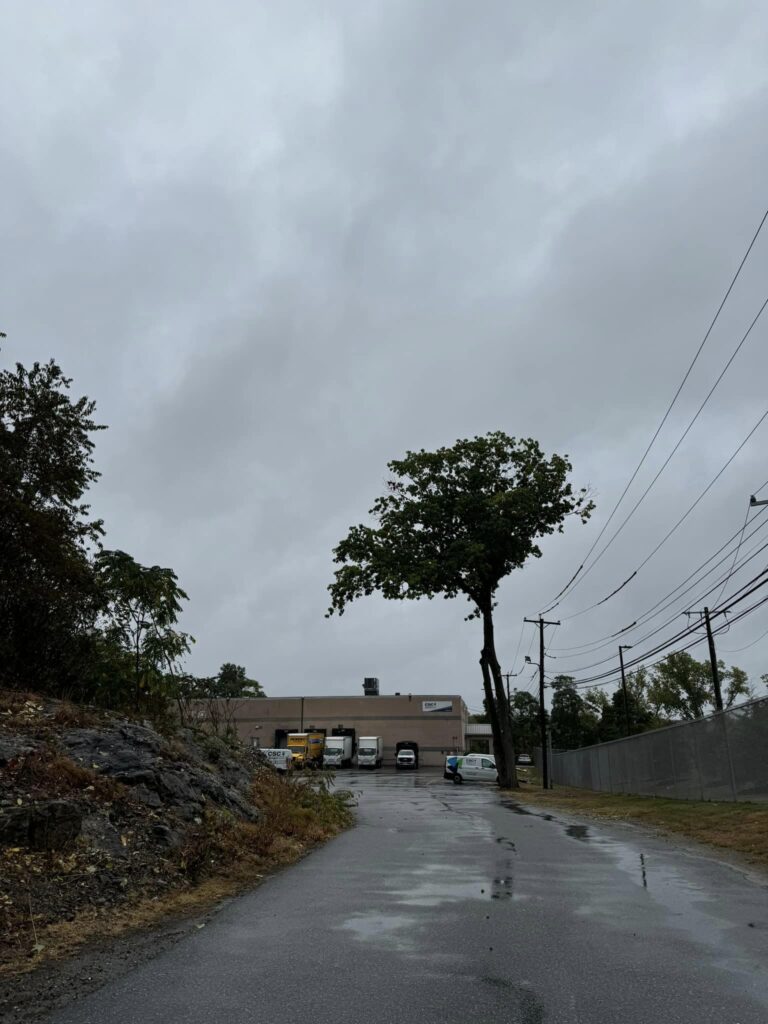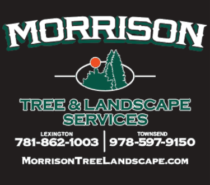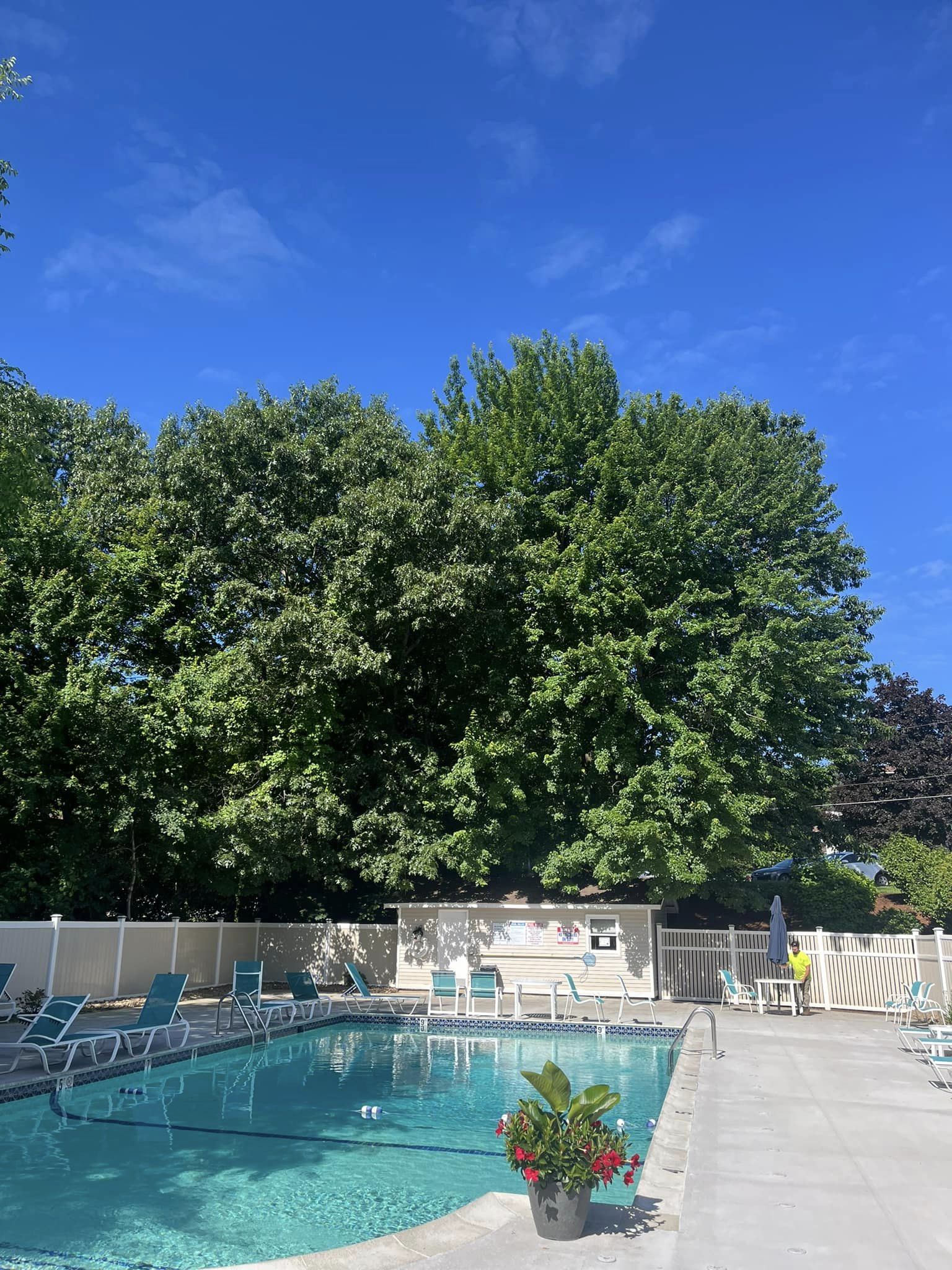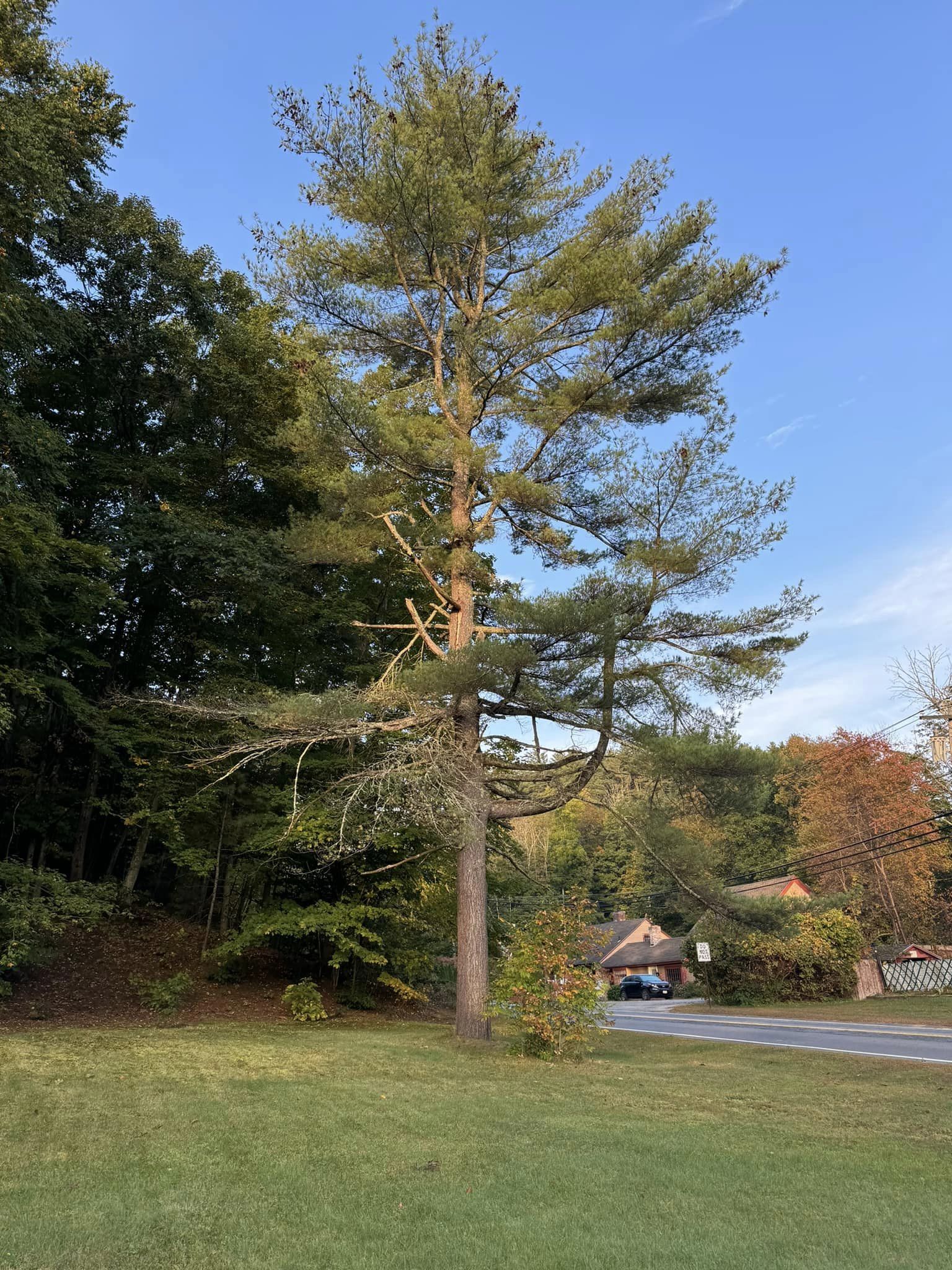At Morrison Tree & Landscape Services, we understand how concerning it can be when your neighbor’s trees pose a potential threat to your home or property. Trees provide shade, beauty, and environmental benefits, but if not properly maintained, they can also become a risk—especially when they lean precariously, have dead limbs, or are weakened by disease. When these trees are located on a neighbor’s property, the situation can feel tricky. Here’s what to do if you’re worried about a neighbor’s tree potentially falling and damaging your property.
1. Evaluate the Condition of the Tree
Start by assessing the tree’s condition. Look for warning signs such as:
- Leaning trees – A tree that is leaning significantly could be in danger of falling, especially during strong winds or storms.
- Dead branches – Large, dead branches that overhang your property can fall unexpectedly and cause significant damage.
- Diseased or decaying trunk – Trees that show signs of disease or rot may have a weakened structure, making them more susceptible to toppling over.
- Root exposure – If the tree’s roots are exposed or the ground around it appears disturbed, it could indicate instability.
If you notice any of these signs, it’s time to take action.
2. Open Communication with Your Neighbor
Once you’ve identified a potential issue, the first step is to have a conversation with your neighbor. Many property owners are unaware that their trees may pose a risk, so approaching them politely and respectfully is key. Share your concerns and point out the specific issues you’ve noticed, whether it’s the tree’s proximity to your property, its weakened state, or visible damage.
3. Document the Problem
If you suspect that the tree is dangerous and your neighbor is uncooperative or dismissive, it’s important to document the situation. Take photos of the tree from different angles, especially those showing how it may impact your property. If possible, record the dates and any communication you’ve had with your neighbor regarding the tree.
4. Check Local Laws and Regulations
Laws governing trees and property boundaries can vary by state and municipality. In Massachusetts, for instance, property owners are generally responsible for the maintenance of their trees and any damage caused by fallen limbs or trees. However, if you’ve previously alerted your neighbor about the hazardous condition of their tree and they’ve taken no action, they could be liable for any damage caused if the tree falls.
If you’re uncertain about your rights, contact your town or city’s planning department or consult a legal professional.
5. Consider a Certified Arborist Inspection
If the tree is clearly in poor condition, it may be wise to hire a certified arborist to inspect the tree. At Morrison Tree & Landscape Services, we can provide expert assessments and document the tree’s condition, giving you a professional opinion that may be useful when approaching your neighbor or presenting your case if legal action becomes necessary. Our team can recommend the best course of action, whether that’s pruning, cabling, or removal of the tree.
6. Consider Mediation Before Legal Action
If discussions with your neighbor stall, you may want to consider mediation before jumping into legal proceedings. Mediation can help you and your neighbor come to a mutual agreement about tree removal or maintenance without the cost and stress of a court battle.
7. Know When to Get Legal Help
In rare cases, a neighbor may refuse to address the issue, leaving your property at continued risk. At this point, it’s advisable to consult a lawyer who specializes in property or real estate law. Depending on your documentation, local laws, and the severity of the tree’s condition, you may be able to pursue legal action to compel your neighbor to address the situation. If the tree does fall and causes damage, you may also need to file a claim through your homeowner’s insurance.
8. Take Preventative Measures
While waiting for a resolution, it may be worth taking preventative measures on your own property. Trim back any branches from the neighbor’s tree that extend onto your side of the property (but don’t touch anything on their side without permission, as this could lead to legal issues). Additionally, make sure to maintain your trees, so you’re setting an example and preventing similar concerns from arising in the future.
Conclusion
At Morrison Tree & Landscape Services, we specialize in helping homeowners maintain healthy, safe trees while respecting property boundaries. If you’re concerned about a neighbor’s tree potentially causing damage, we can provide expert advice and services to help you navigate the situation. Don’t wait for the worst to happen—reach out to us for a consultation today and protect your home from preventable tree damage.
Contact Us:
Morrison Tree & Landscape Services
Serving Massachusetts for over 20 years!
Phone: (781) 862-1003
Website: https://morrisontreelandscape.com/
With proactive communication, legal knowledge, and expert assistance, you can help ensure that your property remains safe and protected from the risks posed by neighboring trees.




